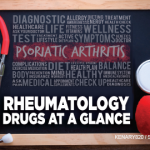

Pipeline and Drug Approvals
Buprenorphine transdermal system (Butrans) for treating moderate to severe chronic pain requiring a continuous, around-the-clock opioid analgesic for an extended period, has been approved by the Food and Drug Administration (FDA) in a new dosage strength of 15 μg/hour.1 It is a once-weekly transdermal patch which is already available in 5-, 10-, and 20-mcg/hr strengths. A Risk Evaluation and Mitigation Strategy (REMS) also exists for the buprenorphine transdermal system.
Canakinumab (Ilaris) has been approved by the European Commission (EC) to treat active systemic juvenile idiopathic arthritis (sJIA) in patients two years of age and older who have had an inadequate response to previous therapy with systemic corticosteroids and nonsteroidal antiinflammatory drugs (NSAIDs).2 Patients two to 19 years of age in the clinical trials showed significant improvements (84%) in the adapted pediatric ACR30 compared to a 10% response in placebo-treated patients following one subcutaneous (SubQ) dose of canakinumab. Ninety-two of 128 patients attempted steroid tapering in the open-label part of one of the studies. Of these patients, 46% discontinued corticosteroids entirely while 62% significantly reduced their corticosteroid use. Additionally, in the controlled portion of this study, there was a 64% relative reduction in the flare risk for the canakinumab-treated patients compared with placebo-treated patients. All primary endpoints were met.
Ustekinumab (Stelara), the interleukin 12 and 23 antagonist, has been FDA approved for treating adults with moderate to severe psoriatic arthritis, either as monotherapy or in combination with methotrexate.3,4 This approval was based on the results of the PSUMMIT I and PSUMMIT II trials. These studies were multinational, phase III, multicenter, double-blind, placebo controlled, and randomized. Studies included 927 patients with at least five tender and swollen joints and elevated C-reactive protein (>3 mg/L) despite conventional therapy and/or previous biologic treatment with tumor necrosis factor–blocking agents. Patients received either SubQ placebo, SubQ ustekinumab 45 mg, or SubQ ustekinumab 90 mg at baseline and after one month, and every 12 weeks thereafter. Patients were randomized in a 1:1:1 manner. The primary endpoint was a 20% or greater improvement in ACR20 criteria at Week 24. In PSUMMIT 1, at six months, 42% of patients the ustekinumab 45 mg–treated group had a 20% improvement in symptoms, according to the ACR20; 50% of the ustekinumab 90 mg–treated group had a 20% improvement in symptoms, according to the ACR20 in the same timeframe. Placebo-treated patients had a 23% response rate. In PSUMMIT II, 44% of active-treated patients had an ACR20 response at six months.
The European Commission has also approved ustekinumab for treating active psoriatic arthritis in adults with an inadequate response to previous nonbiological disease-modifying antirheumatic drugs.5
Drug Safety
Fentanyl transdermal systems have undergone a labelling overhaul due to accidental exposures in children leading to serious illness and death.6 In the last 16 years, there have been 32 reported cases of accidental exposure to fentanyl, including 12 deaths and 12 additional hospitalizations. Most of these have occurred in children under the age of two years. Using long-lasting, visible ink, the FDA is requiring each patch to be clearly marked with the drug name and strength in a clearly visible color in order to help reduce accidental exposure risk. Prior ink colors varied by drug strength and were not always easy to read. Two prior public health advisories were issued by the FDA, in 2005 and 2007, related to the safe use of fentanyl patches. The FDA recommends that fentanyl patch users take precautions to reduce possible child exposure to fentanyl, and that healthcare providers may need to educate their patients regarding appropriate use and disposal of this product. Patches should be stored in a secure location that is out of children’s reach and sight. Toddlers may think the patch is a sticker, tattoo, or bandage. When using the patch, consider covering it with an adhesive film, such as Tegaderm or Bioclusive, to make sure the patch doesn’t come off the body. When using, make sure—either by touching or looking at the patch—that it is still in place. Used patches need to be appropriately discarded by being folded in half, joining the sticky sides together, and then flushed down the toilet. The FDA has recognized that there are environmental hazard concerns when patches are disposed in this manner. Healthcare providers need to explain to caregivers and patients how to appropriately store and dispose of these patches and other potentially hazardous medications to prevent inadvertent harm, especially to very young individuals.
Due to the current prescription-drug abuse problems related to misuse, abuse, overdose, and death from opioids, the FDA is mandating a requirement for labeling changes and postmarket studies to reduce the serious risks of extended release and long-acting (ER/LA) opioids.7 In doing so, FDA hopes to preserve appropriate medication access for patients who require pain management, while deterring abusers. The indication has been updated to state that ER/LA opioids are indicated for managing severe pain severe enough to require daily, around-the-clock, long-term opioid treatment and for which alternative treatment options have been inadequate. It further clarifies that, due to risks of addiction, misuse, and abuse, even at recommended doses, and because of greater overdose and death risks, the ER/LA opioids should be reserved for use in patients for whom alternative treatment options (e.g., nonopioid analgesics or immediate-release opioids) have not been effective, tolerated, or have not provided sufficient pain management. In addition, the new indication states that ER/LA opioids are not indicated for “as-needed” pain relief. The FDA is also requiring manufacturers of ER/LA opioids to conduct further studies and clinical trials. The goals of these postmarketing requirements are to further evaluate known serious risks of misuse, abuse, hyperalgesia, addiction, overdose, and death. A boxed warning has been added that chronic maternal use of ER/LA opioids during pregnancy leading to neonatal opioid withdrawal syndrome (NOWS), which may be life threatening to the infant. Once these safety labeling changes have been completed, the REMS for these products will be updated.
Rituximab has recently received a boxed warning due to the associated risk of immunosuppressive-related hepatitis B virus (HBV) reactivation.8 Additional recommendations for screening, monitoring, and managing patients treated with rituximab and another immunosuppressive agent, ofatumumab, are also included in the revised label to decrease patient risk. After taking either of these two these immunosuppressive agents, some patients with prior HBV infection have developed fulminant hepatitis, hepatic failure, and have even died. To decrease the risk of HBV reactivation, the FDA recommends the following: 1) all patients to be treated with these agents be screened for HBV infection by measuring hepatitis B surface antigen (HBsAg) and hepatitis B core antibody (anti-HBc) prior to therapy commencement; 2) when screening identifies patients at risk for HBV reactivation due to prior HBV infection, consult with hepatitis experts concerning use of antiviral (HBV) therapy and patient monitoring; 3) monitor high-risk patients taking rituximab for laboratory signs of HBV reactivation (e.g., elevated alanine aminotransferase and/or aspartate aminotransferase levels, elevated alkaline phosphatase levels, gamma-glutamyl transpeptidase levels, bilirubin levels, albumin levels, etc.) and clinical signs of HBV reactivation (e.g., nausea, intermittent mild-to-moderate right upper quadrant and epigastric pain, disordered gustatory and smell sensations, anorexia, myalgia, low-grade fever, fatigue, etc.). This should be done within the first several months of treatment.9 Reactivation has occurred several months after starting these immunosuppressive agents. If patients develop HBV reactivation, the immunosuppressive agent should be immediately discontinued, and HBV therapy should be started. At present, no recommendation can be made about resuming treatment with immunosuppressive agents.
Michele Kaufman is a freelance medical writer based in New York City, a pharmacist at New York Presbyterian–Lower Manhattan Hospital, and adjunct faculty at Touro College of Pharmacy.
References
- FDA Clears new dosage for buprenorphine pain patch. Published September 24, 2013. www.medscape.com/viewarticle/811557. Accessed September 25, 2013.
- Novartis receives EU approval for Ilaris in active systemic juvenile idiopathic arthritis, a serious form of childhood arthritis. Published September 4, 2013. www.medicalnewstoday.com/releases/265629.php. Accessed September 11, 2013.
- McInnes IB, Kavanaugh A, Gottlieb AB, et al. Efficacy and safety of ustekinumab in patients with active psoriatic arthritis: 1 year results of the phase 3, multicentre, double-blind, placebo-controlled PSUMMIT 1 trial. Lancet. 2013;382:780-789.
- Walsh K. FDA OKs Stelara for Psoriatic Arthritis. Published September 24, 2013. www.medpagetoday.com/Rheumatology/Arthritis/41808. Accessed September 24, 2013.
- Barber J. Johnson & Johnson’s Stelara approved in US, Europe for psoriatic arthritis Published September 23, 2013. www.firstwordpharma.com/node/1141095#axzz2frcean47. Accessed September 24, 2013.
- Fentanyl patch can be deadly to children. Published September 24, 2013. www.fda.gov/forconsumers/consumerupdates/ucm300803.htm. Accessed September 24, 2013.
- Liscinsky M. FDA announces safety labeling changes and postmarket study requirements for extended-release and long-acting opioid analgesics. Published September 10, 2013. www.fda.gov/NewsEvents/Newsroom/PressAnnouncements/ucm367726.htm. Accessed September 24, 2013.
- Arzerra (ofatumumab) and Rituxan (rituximab): Drug Safety Communication—New boxed warning, recommendations to decrease risk of hepatitis b reactivation. Published September 25, 2013. www.fda.gov/Safety/MedWatch/SafetyInformation/SafetyAlertsforHumanMedicalProducts/ucm369846.htm. Accessed September 27, 2013.
- Pyrsopoulos NT, Reddy KR, Katz J, et al. Hepatitis B. Medscape Published June 19, 2013. http://emedicine.medscape.com/article/177632-overview. Accessed September 29, 2013.


